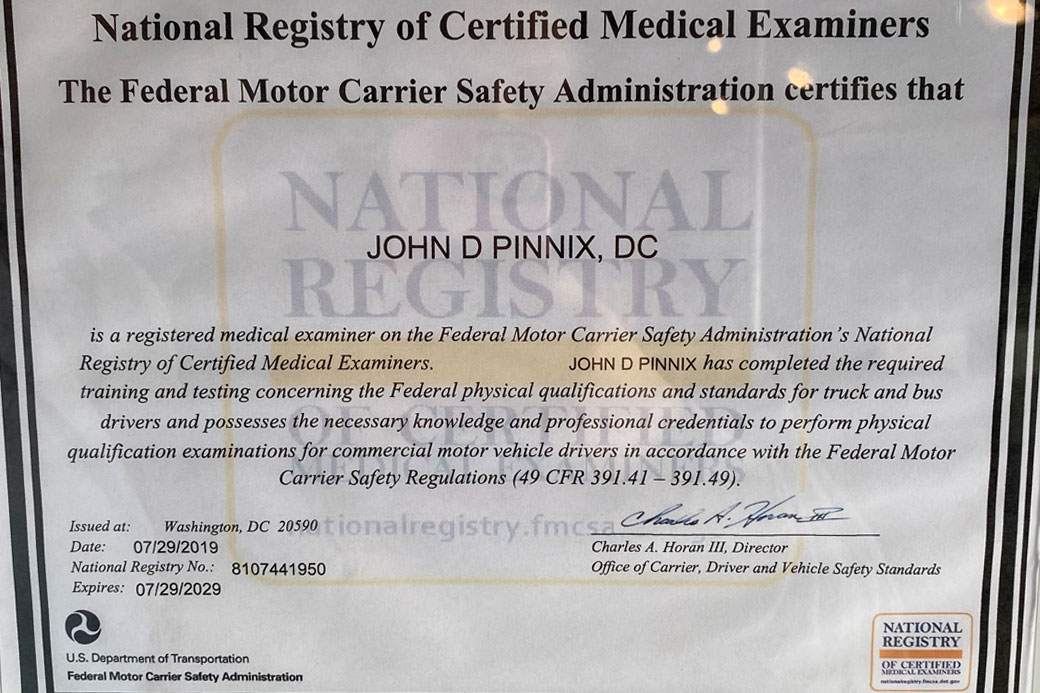

- Flmcsr medical file driver qualification hippa drivers#
- Flmcsr medical file driver qualification hippa license#
During this time, new trucking companies are closely monitored to make sure they are operating safely, maintaining current records, and will pass the new entrant safety audit within the first 12 months to receive permanent authority with the FMCSA. Within the first 18 months of receiving operating authority trucking companies are entered in the New Entrant Safety Assurance Program. The unfortunate news is that in addition to keeping up with renewal filings, and insurance requirements, there are more compliance regulations to be aware of as your trucking company begins operating. But if you did it ─ Congrats! You filed all those forms, acquired insurance, and got your equipment. Getting active motor carrier operating authority (MC number) and your trucking company up and running is, without question, a complicated process. Violations in the Clearinghouse database will include reporting/remain on duty with alcohol concentration of 0.04 or greater, or while using any drug specified in the regulations, alcohol use within four hours of performing a safety sensitive function, using alcohol within eight hours of an accident or prior to the post-accident test, testing positive for a specified drug, or refusing to submit to a required test.Answers to All Your Driver Qualification File (DQF) Compliance Questions After January 6, 2023, only the Clearinghouse inquiry will need to be made. Starting January 6, 2020, the transition toward using the Clearinghouse will begin, and employers will be required to query the database for this information, while continuing to make an inquiry to the previous employer.

Many previous employers are not responsive to receiving a letter or email for an inquiry, so obtaining accurate information is difficult.
Flmcsr medical file driver qualification hippa drivers#
One of the significant benefits of the Clearinghouse for employers will be a simpler drug and alcohol inquiry process for prospective CDL drivers.Ĭurrently, employers must inquire to the CDL driver’s previous employers to determine if there were any violations of FMCSA Drug and Alcohol Regulations, and check the current status of any drivers that had past issues. State Driving Licensing Agencies: make queries prior to completing licensing transactions.Consortiums/Third-Party Administrators: report violations and refusals on behalf of the employer.Substance Abuse Professionals (SAP): report return-to-duty (RTD) initial assessments and eligibility status for RTD testing.Medical Review Officers (MRO): report positive tests and refusals.CDL drivers: view their own records, provide consent, select an SAP, correct inaccurate information.Employers: report drug and alcohol violations, check into prospective CDL driving employees as part of the hiring process, conduct annual inquiries on existing employees.The page also contains a wealth of information for employers and drivers, so we recommend using it as an opportunity to brush up on your reporting knowledge. Here are some helpful tips for those using the system: Action you should takeĮmployers with CDL drivers covered under 49 CFR Part 40 should visit the FMCSA website and register for the Clearinghouse prior to January 6, 2020. While the site is designed to simplify accessing and tracking records for drivers, new systems can be difficult to maneuver. Organizations which are currently required to comply with drug and alcohol testing requirements for CDL drivers must register by January 6, 2020. The Clearinghouse will contain information pertaining to violations of Department of Transportation (DOT) drug and alcohol rules for holders of CDLs.

Flmcsr medical file driver qualification hippa license#
The Federal Motor Carrier Safety Administration (FMCSA) is launching their Drug and Alcohol Clearinghouse early next year, and all employers with Commercial Driver’s License (CDL) drivers covered under 49 CFR Part 40 will be required to use it.


 0 kommentar(er)
0 kommentar(er)
